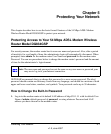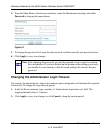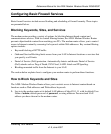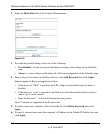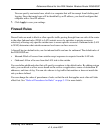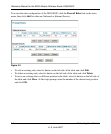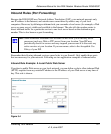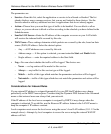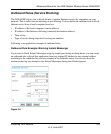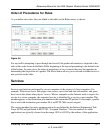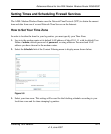
Reference Manual for the ADSL Modem Wireless Router DG834GSP
5-8 Protecting Your Network
v1.0, June 2007
The parameters are:
• Service—From this list, select the application or service to be allowed or blocked. The list
already displays many common services, but you are not limited to these choices. Use the
Services menu to add any additional services or applications that do not already appear.
• Action—Choose how you want this type of traffic to be handled. You can block or allow
always, or you can choose to block or allow according to the schedule you have defined in the
Schedule menu.
• Send to LAN Server—Enter the IP address of the computer or server on your LAN which
will receive the inbound traffic covered by this rule.
• WAN Users—These settings determine which packets are covered by the rule, based on their
source (WAN) IP address. Select the desired option:
– Any — all IP addresses are covered by this rule.
– Address range — if this option is selected, you must enter the Start and Finish fields.
– Single address — enter the required address in the Start field.
• Log—You can select whether the traffic will be logged. The choices are:
– Never — no log entries will be made for this service.
– Always — any traffic for this service type will be logged.
– Match — traffic of this type which matches the parameters and action will be logged.
– Not match — traffic of this type which does not match the parameters and action will be
logged.
Considerations for Inbound Rules
If your external IP address is assigned dynamically by your ISP, the IP address may change
periodically as the DHCP lease expires. Consider using the Dynamic DNS feature in the Advanced
menu so that external users can always find your network.
If the IP address of the local server computer is assigned by DHCP, it may change when the
computer is rebooted. To avoid this, use the Reserved IP address feature in the LAN IP menu to
keep the computer’s IP address constant.
Local computers must access the local server using the server’s local LAN address (10.1.1.2 in the
example above). Attempts by local computers to access the server using the external WAN IP
address will fail.




